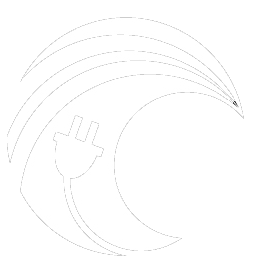Alt Text: Inyong Kim wearing a white cap and jacket while opening his locker at Wallace Energy Systems and Renewables Facility.
A PMEC Insider Story, by Judy Twedt
“You need to understand how water behaves.”
This was one of the first things the Inyong Kim told me when we sat down to talk about his research in predicting ocean waves for energy conversion.
Kim is a PhD student in Electrical Engineering at Oregon State University investigating ways to improve the operation and control of wave energy converters (WECs) so that they can harness ocean energy more efficiently.
The US West Coast, and the Pacific Northwest in particular, is one of the greatest wave power regions on the planet. In the calmer seas of summer months, wave energy off the Oregon Coast averages 20 kW/m. This ramps up to 70 - 80 kW/m in stormier winter months. Arrays of wave energy converters could produce grid-scale power, in addition powering remote operations such as offshore aquaculture, ocean monitoring systems and AUV recharging for research and offshore energy applications. And since wave energy is more predictable and less variable than solar and wind power, it has the potential to be used for grid power smoothing and reliability.
Wave energy conversion, however, is fundamentally different from most forms of power generation. A gas-powered steam plant, a typical hydropower dam, or a tidal turbine all harness energy from unidirectional motion — rising steam, flowing water, or a tidal current — all spinning a turbine in a single direction. Ocean waves, on the other hand, come from all directions. Each individual wave is circular in motion, and waves arriving at a single location are constantly changing in height and frequency. So, research in wave energy conversion cannot make use of the decades of research on turbine efficiency; this industry must innovate.
Kim’s research applies to WEC control operations. Within a WEC, the mechanism that converts kinetic wave energy to electrical energy is the power take-off system (PTO). Most WECs have some form of damping in the power take-off to make them more or less resistive to movement. Effective use of the damping improves the efficiency of energy conversion. An analogy is the brake system in a vehicle. When driving a car into a steep bend in the road, a skilled driver will brake going into the bend, and then let up on the brake and accelerate into the curve. This type of brake control allows the vehicle to avoid jerking and flow smoothly around the bend. In a WEC, effective use of damping allows the device to resonate with the incoming wave and move optimally for maximum energy conversion.
To consider a real-world example, I spoke with Curtis Rusch, a PMEC senior engineer with the University of Washington’s Applied Physics Lab. He has been developing and testing point absorber WECs, most recently working with a device called TigerRAY in an industry collaboration with CPower. In the first test, the damping was too high. “Everything was stiff, it was like a rigid raft bobbing around, nothing was flexing,” said Rusch. “Once we turned off the PTO entirely, in freewheel, everything was able to move very gently, but neither situation produced power. Getting to that happy medium of some damping, enough so you get current coming out of your generator is the balancing act.”
Kim’s research could take the guesswork out of that balancing act.
How does it do this? He utilized a mathematical tool that predicts the frequency of the next incoming wave, in near real-time. Unlike previous algorithms used for this purpose, Kim’s is computationally efficient. Efficiency is paramount: at sea, each watt matters.
“The mathematical machine that Kim has constructed to predict incoming wave frequency is a vector that rotates in complex space with a real and imaginary part, and the projection — or shadow — of that vector onto the real dimension, is made to match the real wave that we see,” explained PMEC associate director Prof. Ted Brekken. This knowledge of the machine that makes the waves that match real, incoming waves, can inform how to adjust and control the WEC so that it resonates with the impinging waves.
Details of Kim’s work will be under review in a forthcoming issue in Applied Sciences [1]. The next step for Kim? Collaborating with an AI research group at Oregon State University to make further improvements toward operational.
[1] I. Kim, T. Brekken, S. Yim, B. Johnson, Y. Cao, and P. Chandran, "Real-Time Wave Energy Converter Control Using Instantaneous Frequency," Applied Sciences, MDPI, (Under review)

